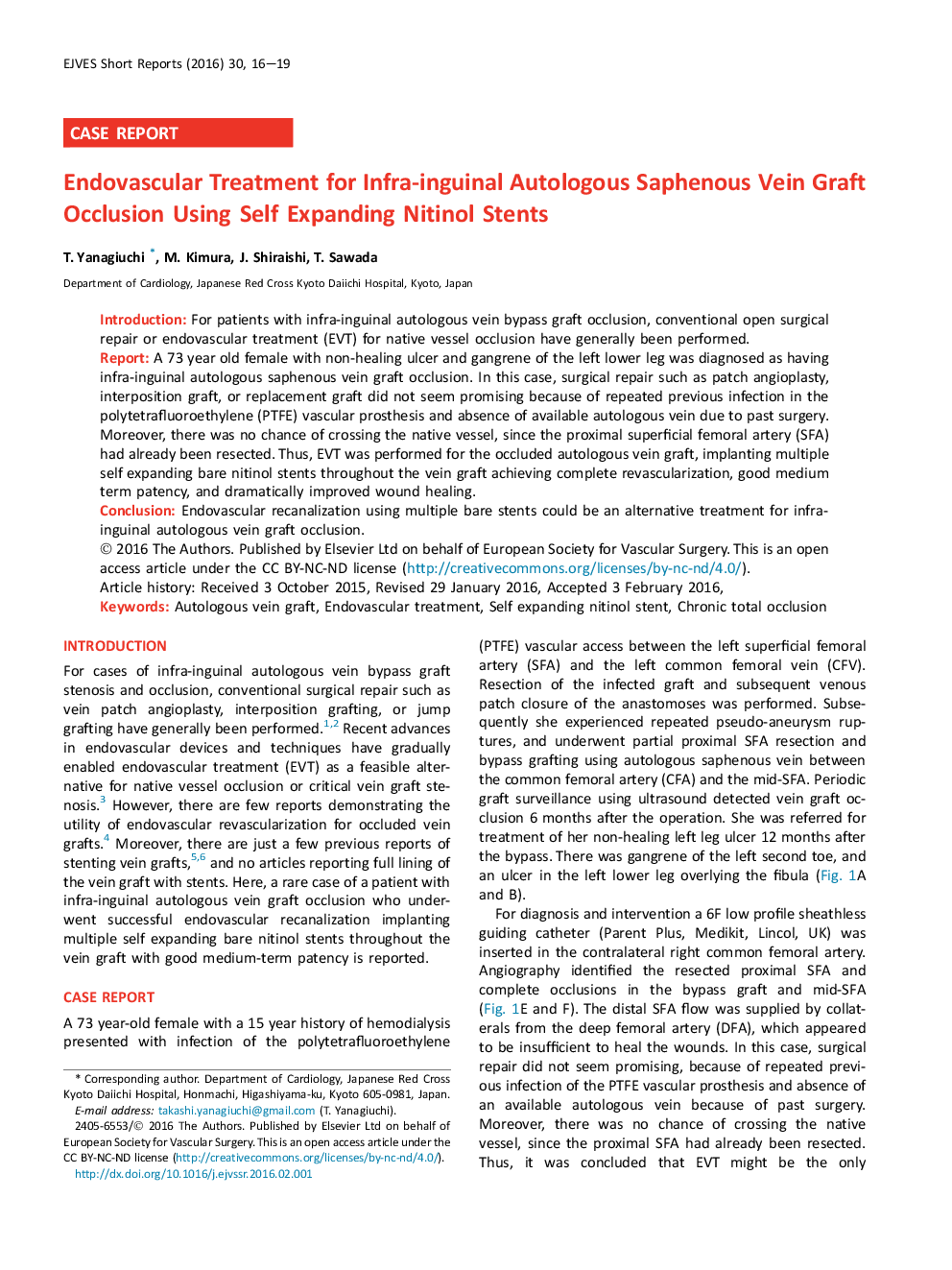| Article ID | Journal | Published Year | Pages | File Type |
|---|---|---|---|---|
| 2911441 | EJVES Short Reports | 2016 | 4 Pages |
•This report highlights EVT for infra-inguinal autologous vein graft occlusion.•Self-expanding nitinol bare stents were implanted throughout the vein graft.•Just after the procedure, we confirmed sufficient expansion of the nitinol stents.•The treated vessel had good patency without repetitive intervention for 15 months.•The ulcer and gangrene gradually healed.
IntroductionFor patients with infra-inguinal autologous vein bypass graft occlusion, conventional open surgical repair or endovascular treatment (EVT) for native vessel occlusion have generally been performed.ReportA 73 year old female with non-healing ulcer and gangrene of the left lower leg was diagnosed as having infra-inguinal autologous saphenous vein graft occlusion. In this case, surgical repair such as patch angioplasty, interposition graft, or replacement graft did not seem promising because of repeated previous infection in the polytetrafluoroethylene (PTFE) vascular prosthesis and absence of available autologous vein due to past surgery. Moreover, there was no chance of crossing the native vessel, since the proximal superficial femoral artery (SFA) had already been resected. Thus, EVT was performed for the occluded autologous vein graft, implanting multiple self expanding bare nitinol stents throughout the vein graft achieving complete revascularization, good medium term patency, and dramatically improved wound healing.ConclusionEndovascular recanalization using multiple bare stents could be an alternative treatment for infra-inguinal autologous vein graft occlusion.
